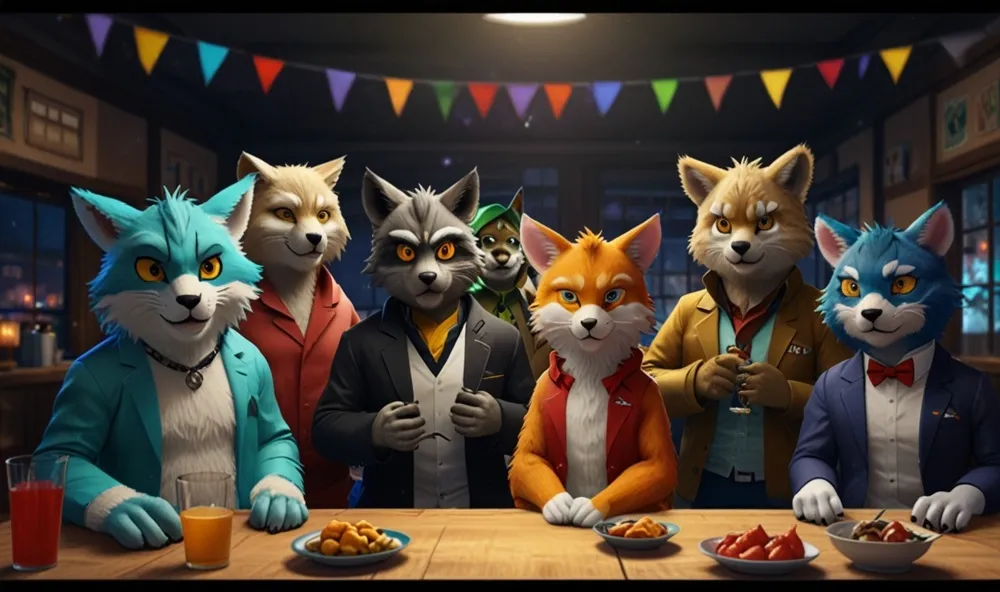
Kemono Party: A Vibrant Hub for Digital Creations
Kemono Party—ever heard of it? If you’re into digital art, animations, or niche fandom content, chances are you’ve stumbled across it at least once. Or maybe you fell down a rabbit hole, lost three hours of your life, and came out questioning your life choices. (Been there.)
This place is an absolute madhouse of creativity. It’s where fans share artwork, comics, and animations that were originally behind paywalls—stuff from Patreon, Fanbox, Fantia, and other crowdfunding sites. The site itself? Kinda controversial, kinda chaotic, but undeniably fascinating. It’s like the flea market of digital content: a little dusty, a little messy, but full of hidden gems if you dig deep enough.
What Exactly Is Kemono Party?
Alright, let’s back up. Imagine you’re an artist pouring your heart into exclusive content for your Patreon subscribers. You’ve got supporters paying five, ten, maybe twenty bucks a month for your latest illustrations. Then—bam!—someone uploads it to Kemono Party, where it’s suddenly free for anyone to see.
Brutal? Yeah. But also kind of inevitable in the internet age.
Now, I’m not saying it’s just a place for leaked content. (Though, let’s be real, that’s what most people associate it with.) It’s also a weirdly thriving community for digital art lovers, especially fans of furry art, anime, and indie creators. People discuss art styles, discover new artists, and—sometimes—end up financially supporting them after finding their work here.
Why Do People Flock to Kemono Party?
Three reasons:
- Free access to exclusive content. This one’s obvious. Some folks just don’t want to pay for Patreon subscriptions. Others use Kemono Party as a “try before you buy” situation—checking out an artist’s work before deciding to subscribe.
- It’s a niche art goldmine. If you’re into furry art, anime-style illustrations, or, let’s say, very specific types of fantasy content (you know who you are), Kemono Party is a treasure trove. The mainstream internet isn’t always great at curating niche art, but this site? Oh, it’s got everything.
- Artists get exposure—whether they like it or not. Some artists hate it. Others secretly appreciate the publicity. A few even use it as an unofficial portfolio—kind of like when you “accidentally” leave your best sketches lying around in a coffee shop, hoping someone notices.
How to Navigate the Madness
If you’re new to Kemono Party, brace yourself. The interface isn’t exactly Apple-level sleek, but it gets the job done. Here’s the basic rundown:
- Search bar = Your best friend. Looking for a specific artist? Type in their Patreon or Fanbox handle, and voilà, their work (probably) pops up.
- Tags and categories. Want to browse by theme? The site sorts content into categories—furry, anime, comics, animations, and so on.
- Community discussions. People talk about art styles, trends, and—sometimes—whether this whole setup is morally okay. (Spoiler: Opinions are divided.)
The Big Legal and Ethical Question
Okay, let’s talk about the elephant in the room. Is Kemono Party legal?
Short answer: Probably not.
Long answer: It exists in a weird internet gray area.
Since the site distributes content that was originally locked behind a paywall, it definitely steps on some legal toes. Patreon and similar platforms hate this kind of thing, and many artists have spoken out against their work being shared without permission.
But then there’s the counterargument. Some people defend Kemono Party as a form of free publicity—an inevitable side effect of the digital age, kind of like when music artists used to freak out about Napster but then realized streaming was the future.
Whatever side you’re on, the fact remains: Kemono Party is here, it’s thriving, and it’s probably not going anywhere anytime soon.
The Future of Kemono Party: What’s Next?
So, what happens now? Will Kemono Party evolve, get shut down, or morph into something new? Hard to say. But here are some possibilities:
- Artists might find better ways to protect their content. Some are already watermarking their work or moving to platforms with stronger security.
- Kemono Party could get taken down—only to be replaced by something else. Because let’s be honest, once something like this exists, it’s tough to put the genie back in the bottle.
- More artists might use it as an unofficial marketing tool. It’s already happening. Some see leaked content as an opportunity to gain followers who actually pay for their work.
Final Thoughts: Love It, Hate It, or Just Plain Curious?
Look, Kemono Party is one of those internet phenomena that sparks endless debates. Is it helping artists or hurting them? Is it a community-driven hub or just a glorified piracy site? Depends on who you ask.
If you’re an artist, you might be side-eyeing it with frustration. If you’re a fan, you might see it as a guilty pleasure. Either way, it’s a fascinating corner of the digital art world—messy, controversial, and absolutely packed with creative energy.
